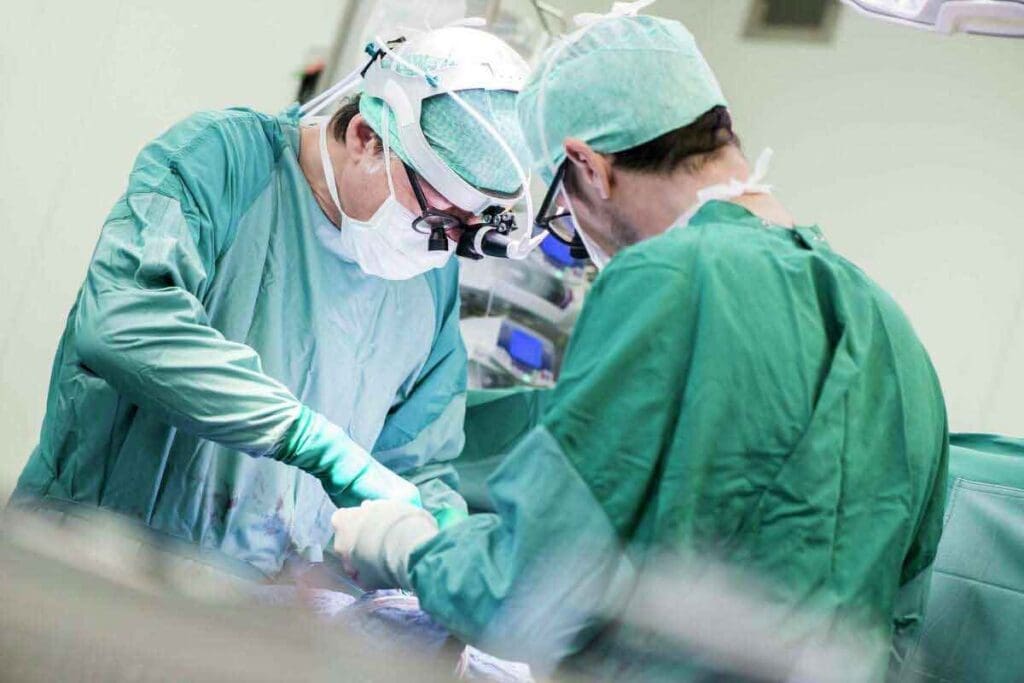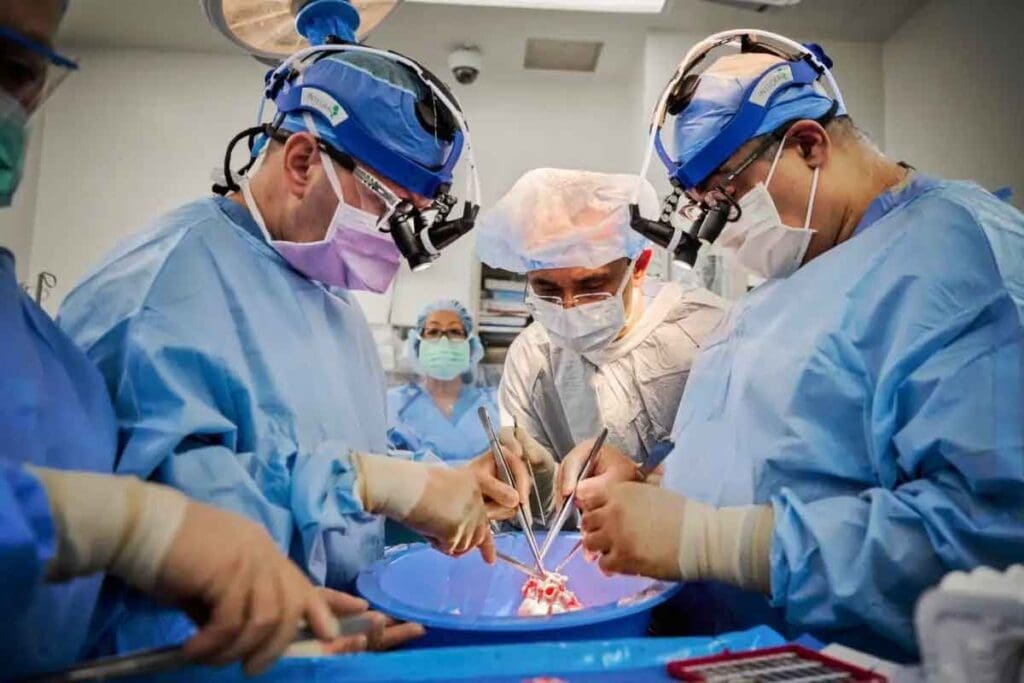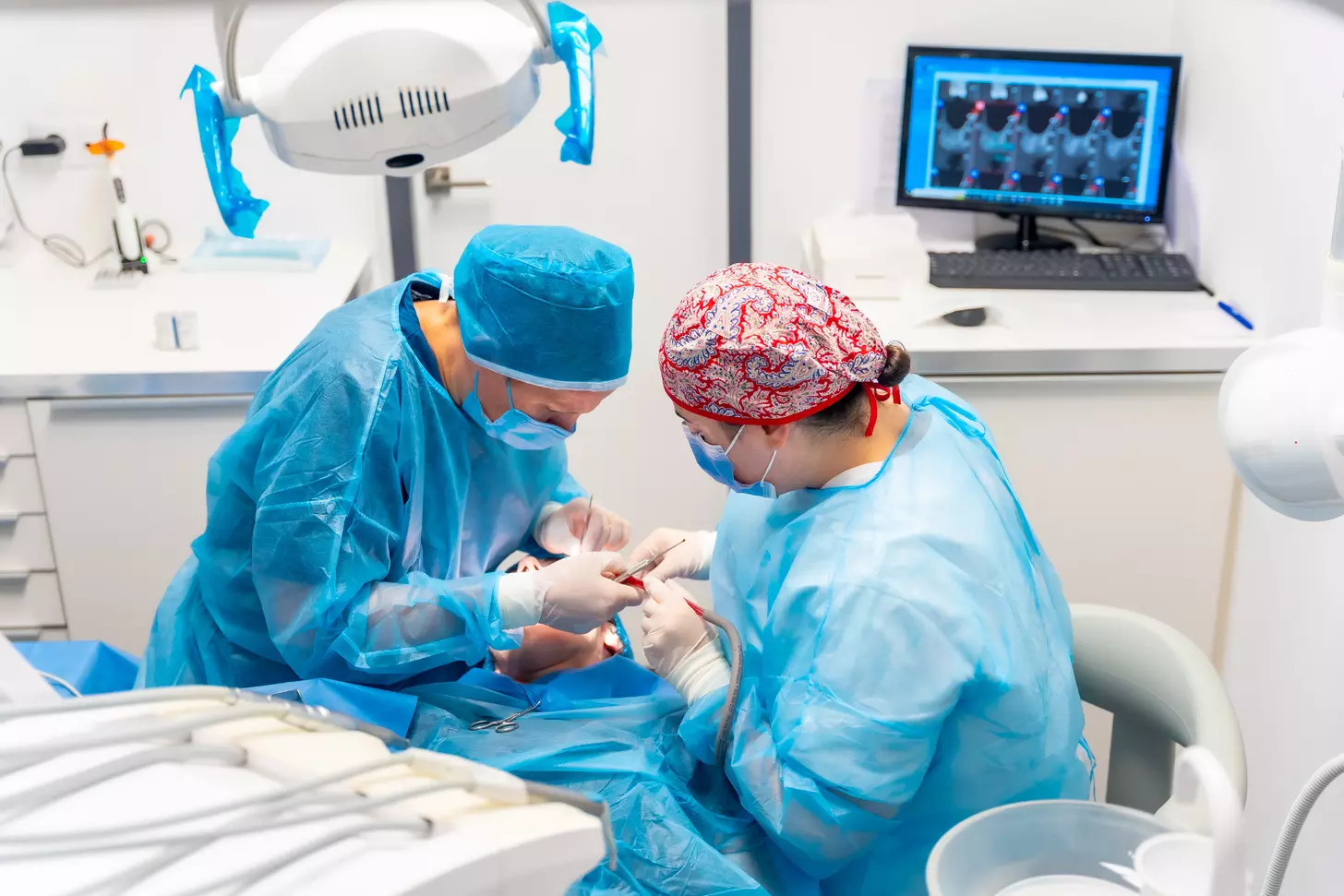Last Updated on November 26, 2025 by Bilal Hasdemir

Atrial fibrillation (AFib) is a common heart condition that affects millions. It raises the risk of stroke and heart failure. But, heart ablation offers a solution, helping to restore a normal heart rhythm. This can greatly improve the lives of those with AFib. Understand what is an ablation operation and how it treats atrial fibrillation effectively.
Heart ablation, also known as cardiac or catheter ablation, is a key treatment. It’s a minimally invasive procedure that creates tiny scars in the heart. These scars stop abnormal electrical signals, allowing the heart to beat normally again.
A cardiac electrophysiologist performs ablation for atrial fibrillation in a special lab. This treatment is very effective. Knowing how it works helps patients make better choices for their heart health.
Key Takeaways
- Heart ablation is a minimally invasive procedure to treat irregular heart rhythms.
- It is very effective for treating atrial fibrillation (AFib).
- The procedure involves creating tiny scars to block abnormal electrical signals.
- Performed by a cardiac electrophysiologist in a specialized lab.
- Restores a normal heart rhythm, improving quality of life.
Understanding Atrial Fibrillation and Its Impact on Heart Health

Atrial fibrillation, or AFib, is when the heart’s rhythm gets messed up. It makes the heart beat fast and irregularly. This happens because the upper chambers of the heart beat chaotically, not in sync with the lower chambers.
The Mechanism of Normal Heart Rhythm
A healthy heart has a system that controls its beat. The sinoatrial (SA) node is like the heart’s natural clock. It sends electrical signals to the atria, making them contract. Then, the atrioventricular (AV) node sends these signals to the ventricles, keeping the heartbeat in sync.
How Atrial Fibrillation Disrupts Normal Heart Function
AFib messes with this system by making the atria quiver instead of beat. This sends irregular signals to the ventricles, causing a fast and irregular heartbeat. The quivering can also cause blood clots, raising the risk of stroke.
Key effects of AFib on heart function include:
- Irregular heartbeats
- Reduced cardiac output
- Increased risk of stroke
- Potential for heart failure
Symptoms and Complications of Untreated AFib
Symptoms of AFib can vary a lot. People might feel heart palpitations, shortness of breath, fatigue, and dizziness. If not treated, AFib can cause serious problems like stroke and heart failure.
It’s important to know how AFib affects the heart. Recognizing symptoms early can help prevent serious issues. By understanding AFib, people can get help quickly and avoid severe complications.
What Is an Ablation Operation: The Basics

It’s important to know about ablation operations if you’re thinking about this treatment. Cardiac ablation is a procedure that treats irregular heart rhythms. It creates scars to block abnormal electrical signals.
Definition and Purpose of Cardiac Ablation
Cardiac ablation is a procedure that uses energy to destroy heart tissue causing irregular heart rhythms. Its main goal is to treat heart rhythm disorders, or arrhythmias, by removing the source of the irregular heartbeat.
The procedure uses catheters to deliver energy to the heart area causing the arrhythmia. This aims to restore a normal heart rhythm and improve the patient’s quality of life.
Types of Heart Rhythm Disorders Treated with Ablation
Cardiac ablation treats various heart rhythm disorders, including:
- Atrial fibrillation (AFib)
- Atrial flutter
- Supraventricular tachycardia (SVT)
- Ventricular tachycardia
These conditions happen when the heart’s electrical system doesn’t work right, causing irregular heartbeats. Cardiac ablation targets the heart areas causing the arrhythmia, aiming for a cure.
When Ablation Becomes a Treatment Option
Doctors consider cardiac ablation when other treatments, like medications, don’t work. Sometimes, it’s the first choice for treatment, based on the patient’s condition and medical history.
To decide if ablation is a good option, doctors look at several things. They consider the type and severity of the arrhythmia, the patient’s health, and how they’ve responded to previous treatments.
The Science Behind Heart Ablation for Atrial Fibrillation
Heart ablation for atrial fibrillation works by finding and stopping bad electrical paths in the heart. Atrial fibrillation, or AFib, causes irregular heartbeats. These irregular beats can lead to serious problems if not treated. The goal of heart ablation is to fix the heart rhythm by making scars in the heart tissue. These scars block the bad electrical signals causing AFib.
Identifying Abnormal Electrical Pathways
The first step is to find the bad electrical paths causing AFib. This is done with cardiac mapping techniques that show the heart’s electrical activity. Doctors use special catheters with sensors to find the exact spots of the bad signals.
“The key to successful ablation is accurate mapping,” says Expert, a leading electrophysiologist. “By understanding where the abnormal signals are coming from, we can target them effectively.”
How Scarring Disrupts Faulty Electrical Signals
After finding the bad paths, the next step is to make scars to block these signals. This is done by using catheters to send energy to the heart. The energy makes lesions or scars that stop the bad signals, helping the heart beat normally.
Different Energy Sources Used in Ablation
There are several energy sources used in heart ablation:
- Radiofrequency energy: This is the most common, which heats the heart tissue to make scars.
- Cryoenergy: This freezes the heart tissue to make scars.
- Laser energy: Newer systems use laser energy for precise lesions.
Each energy source has its own benefits. The choice depends on the patient’s condition and the doctor’s preference.
As notes, “The choice of energy source is critical and depends on various factors, including the location and size of the area to be ablated.”
Types of Heart Ablation Procedures
There are many heart ablation procedures, each for different heart rhythm disorders. The right procedure depends on the patient’s condition and the doctor’s advice.
Radiofrequency Ablation
Radiofrequency ablation uses heat to create scars in the heart. This stops abnormal heart rhythms. A catheter is inserted through a leg vein to reach the heart and apply the heat.
Key benefits of radiofrequency ablation include:
- High success rate in treating certain arrhythmias
- Minimally invasive procedure
- Quick recovery time
Cryoablation Techniques
Cryoablation uses cold to create scars in the heart. It’s good for treating arrhythmias in sensitive areas. It’s more precise than heat-based methods.
Cryoablation is often preferred when:
- The arrhythmia is located near critical heart structures
- The patient has had previous ablation procedures
- A more precise ablation is required
Laser and Other Emerging Ablation Technologies
Laser ablation uses laser energy to create scars in the heart. It’s less common than radiofrequency and cryoablation but offers a unique approach. New technologies like ultrasound and laser-guided ablations are also being researched.
Comparing Effectiveness of Different Approaches
The success of heart ablation procedures depends on the arrhythmia, patient health, and technique. Radiofrequency and cryoablation have similar success rates for some conditions. Laser ablation is being studied in clinical trials.
When considering heart ablation, it’s essential to:
- Discuss the risks and benefits with a healthcare provider
- Understand the possible complications and success rates
- Consider the patient’s overall health and medical history
Patient Selection: Who Is a Good Candidate for Heart Ablation
Choosing the right patient for heart ablation is key. It involves looking at how bad the atrial fibrillation is, if other treatments worked, and the patient’s overall health. This detailed check helps figure out if someone is right for the procedure.
Medical Criteria for Ablation Candidacy
For ablation, you need to have atrial fibrillation that bothers you and hasn’t gotten better with other treatments. People with persistent or paroxysmal atrial fibrillation who feel bad are usually considered for ablation.
Other things that matter include heart disease, the size of the left atrium, and how long you’ve had atrial fibrillation. Some medical issues, like severe heart failure or significant valve disease, might make you not a good candidate.
When Medications Fail: The Path to Ablation
At first, doctors usually try to treat atrial fibrillation with medicine. But if medicine doesn’t work or causes bad side effects, ablation is an option. Doctors decide on ablation after checking how well the patient responds to medicine and other treatments.
- Failure of anti-arrhythmic medications to control atrial fibrillation
- Intolerance to medications due to side effects
- Presence of symptoms that significantly impact quality of life
Age and Health Considerations
Age and health are big factors in deciding if someone can have heart ablation. While age itself isn’t a reason not to do it, older people might face more risks because of other health issues. The procedure is usually safe for many ages, but older patients need extra careful checking to see their risk level.
Other health issues like diabetes, high blood pressure, and kidney disease also matter. People with serious health problems might need more detailed checks and care before the procedure.
Preparing for a Heart Ablation Procedure
Getting ready for a heart ablation procedure is key to a successful treatment. Patients must go through tests, adjust their meds, and follow certain rules before the big day.
Pre-Procedure Testing and Evaluation
Before the procedure, patients get tested to check their heart health. These tests include:
- Echocardiograms to look at heart function and shape.
- Blood work to see if there’s infection or other issues.
- Electrocardiograms (ECGs) to check the heart’s electrical activity.
- Imaging tests like MRI or CT scans to see the heart’s inside.
These tests help doctors understand the patient’s heart better and plan the ablation.
Medication Adjustments Before Ablation
Patients might need to change or stop some meds before the ablation. This is to lower the risk of bleeding or other problems. Common meds that might be adjusted include:
- Anticoagulants (blood thinners) to prevent too much bleeding.
- Anti-arrhythmic medications that might need to be stopped or changed.
It’s very important for patients to listen to their doctor about changing meds to stay safe during the procedure.
What to Expect the Day Before Surgery
The day before the procedure is very important for getting ready. Patients are usually told to:
- Fast from midnight before the procedure.
- Arrange for someone to drive them home after, as they might be sleepy.
- Follow specific hygiene instructions, like using antibacterial soap.
By doing these things, patients can help make the procedure go smoothly and successfully.
The Heart Ablation Procedure: Step by Step
Heart ablation for atrial fibrillation happens in a special lab. This lab is full of advanced tech for diagnosing and treating heart rhythm issues.
The Cardiac Electrophysiology Laboratory Setting
The lab is a clean space for the procedure. It uses fluoroscopy to see the heart and the catheters. This helps the doctor do the job right.
Anesthesia and Patient Monitoring
Patients get sedation or anesthesia to feel less pain. Their vital signs are watched closely to keep them safe.
“Anesthesia makes heart ablation more comfortable for patients,” says a top cardiologist.
Catheter Insertion and Navigation
Catheters go in through a leg vein and reach the heart. They help record and fix the heart’s electrical issues.
The Ablation Process
The process uses energy to make lesions on the heart. These lesions stop the bad electrical signals, helping the heart beat right again.
The main goal is to block the bad signals from affecting the heart. Doctors use different energy types like radiofrequency or laser, each with its own benefits.
Knowing the steps of the procedure helps patients get ready. They’ll know what to expect during and after the treatment.
Recovery and Aftercare Following Heart Ablation
After a heart ablation, patients start a recovery phase. This phase is all about watching over them closely. It makes sure they heal well and catch any problems early.
Immediate Post-Procedure Care
Right after the procedure, patients stay in a recovery area for hours. Medical staff keep an eye out for any issues, like bleeding or heart rhythm changes. They also teach patients how to handle any pain or discomfort they might feel.
Hospital Stay Duration
How long a patient stays in the hospital varies. It depends on their health and the procedure details. Some might go home the same day, while others need to stay overnight for more checks.
Activity Restrictions and Returning to Normal Life
Once home, patients have to follow certain rules to heal right. They should avoid heavy lifting, hard exercise, or bending. Slowly, they can start doing normal things again, with their doctor’s okay on when it’s safe.
Follow-up Appointments and Monitoring
Follow-up visits are key to recovery. They let doctors check how the patient is doing and adjust treatments if needed. These visits usually happen a few weeks after the procedure, and more might be needed to see how the ablation worked long-term.
By sticking to the recovery plan, patients can get the best results from heart ablation. It’s important for them to talk to their healthcare team about any worries or questions. This way, they can make sure they’re on the right path to healing.
Potential Risks and Complications of Heart Ablation
It’s important to know the risks and complications of heart ablation. This procedure is usually safe and works well for atrial fibrillation. But, patients should understand the possible risks.
Common Minor Complications
Minor issues can happen with heart ablation. These are usually not serious. They might include:
- Temporary discomfort or pain at the catheter insertion site
- Mild swelling or bruising
- Temporary changes in heart rhythm
Doctors say these problems are often easy to handle. They usually get better quickly.
Serious but Rare Complications
Even though rare, serious problems can happen. These might be:
- Cardiac tamponade: fluid builds up around the heart
- Stroke or transient ischemic attack
- Damage to the heart’s electrical system, needing a pacemaker
- Pulmonary vein stenosis, a narrowing of the pulmonary veins
Hopkins Medicine says these serious issues are rare. They happen in a small number of patients.
How Physicians Minimize Procedural Risks
Doctors take steps to lower the risks of heart ablation. They do this by:
- Choosing patients carefully based on their health
- Using advanced imaging for the procedure
- Monitoring patients closely during the ablation
- Using the newest technology for better safety and precision
These steps help doctors reduce risks and improve results for patients.
Are Ablations Dangerous? Putting Risks in Perspective
Heart ablation has risks, but it’s good to see them in context. For many, the benefits of the procedure are worth the risks. It’s key to talk about these with a doctor.
“The decision to undergo heart ablation should be made after careful consideration of the risks and benefits, in consultation with a qualified healthcare professional.”
This way, patients are well-informed. They’re more likely to have a good outcome from the procedure.
Conclusion: Living with AFib After Ablation
Atrial fibrillation ablation is a big step in managing AFib. It gives many patients a chance to feel better and live more normally. After the procedure, many see a big drop in AFib episodes.
But, living with AFib after ablation is not just done and dusted. The procedure might not stop AFib forever. Patients might need to keep taking medicines or trying other treatments to stay on top of their condition.
It’s key to understand how ablation fits into treating AFib. It’s part of a bigger plan that includes lifestyle changes, medicines, and watching the heart closely. This way, people can manage their AFib better and live more easily.
The main aim of atrial fibrillation treatment ablation is to help patients feel better and keep their hearts healthy. By making smart choices about their care, patients can take charge of their health. They can look forward to a brighter, healthier future.
FAQ
What is heart ablation for atrial fibrillation?
Heart ablation is a treatment for irregular heart rhythms. It creates tiny scars in the heart. These scars block abnormal electrical signals that cause arrhythmia.
What is atrial fibrillation, and how does it affect the heart?
Atrial fibrillation is a heart rhythm disorder. It makes the heart beat irregularly and fast. This happens when the upper heart chambers beat chaotically, not in sync with the lower chambers.
What are the symptoms of atrial fibrillation?
Symptoms include heart palpitations, shortness of breath, and feeling tired.
What types of heart rhythm disorders are treated with ablation?
Ablation treats many heart rhythm disorders. This includes atrial fibrillation, atrial flutter, and supraventricular tachycardia.
How is the decision made to undergo ablation?
Doctors decide on ablation when other treatments fail. This includes when medications don’t work.
What is the science behind heart ablation for atrial fibrillation?
The procedure maps the heart’s electrical pathways. It finds the arrhythmia source. Then, it uses catheters to create scars that block abnormal signals.
What are the different types of heart ablation procedures?
There are several types. These include radiofrequency, cryoablation, and laser ablation. Each uses different energy to create scars.
Who is a good candidate for heart ablation?
Good candidates have symptomatic AFib. They should not have responded to medication or have bad side effects from it.
What is the preparation process for heart ablation?
Patients get tests like echocardiograms and blood work. They may need to stop certain medications before the procedure.
What happens during the heart ablation procedure?
The procedure is done under sedation or anesthesia. Catheters deliver energy to the heart.
What is the recovery process like after heart ablation?
Patients are monitored for hours after. They might stay overnight in the hospital. They have activity restrictions and need follow-up appointments.
Are ablations dangerous, and what are the possible risks?
While safe, there are risks. These include bleeding, infection, and damage to the heart or blood vessels.
Can ablation cure atrial fibrillation?
Ablation can treat AFib well. But, patients might need to manage their condition. They might also need to continue with medications or other treatments.
What is the difference between radiofrequency ablation and cryoablation?
Radiofrequency ablation uses heat. Cryoablation uses extreme cold to create scars.
How effective is ablation in treating atrial fibrillation?
Ablation’s effectiveness varies. It depends on individual factors and the type of ablation used.
References
Kuck, K. H., Brugada, J., Fürnkranz, A., Metzner, A., Ouyang, F., Chun, K. R. J., Elvan, A., Arentz, T., Bestehorn, K., Pokushalov, E., Kautzner, J., & Willems, S. (2016). Cryoballoon or radiofrequency ablation for paroxysmal atrial fibrillation. New England Journal of Medicine, 374(23), 2235–2245. https://pubmed.ncbi.nlm.nih.gov/27042864/






